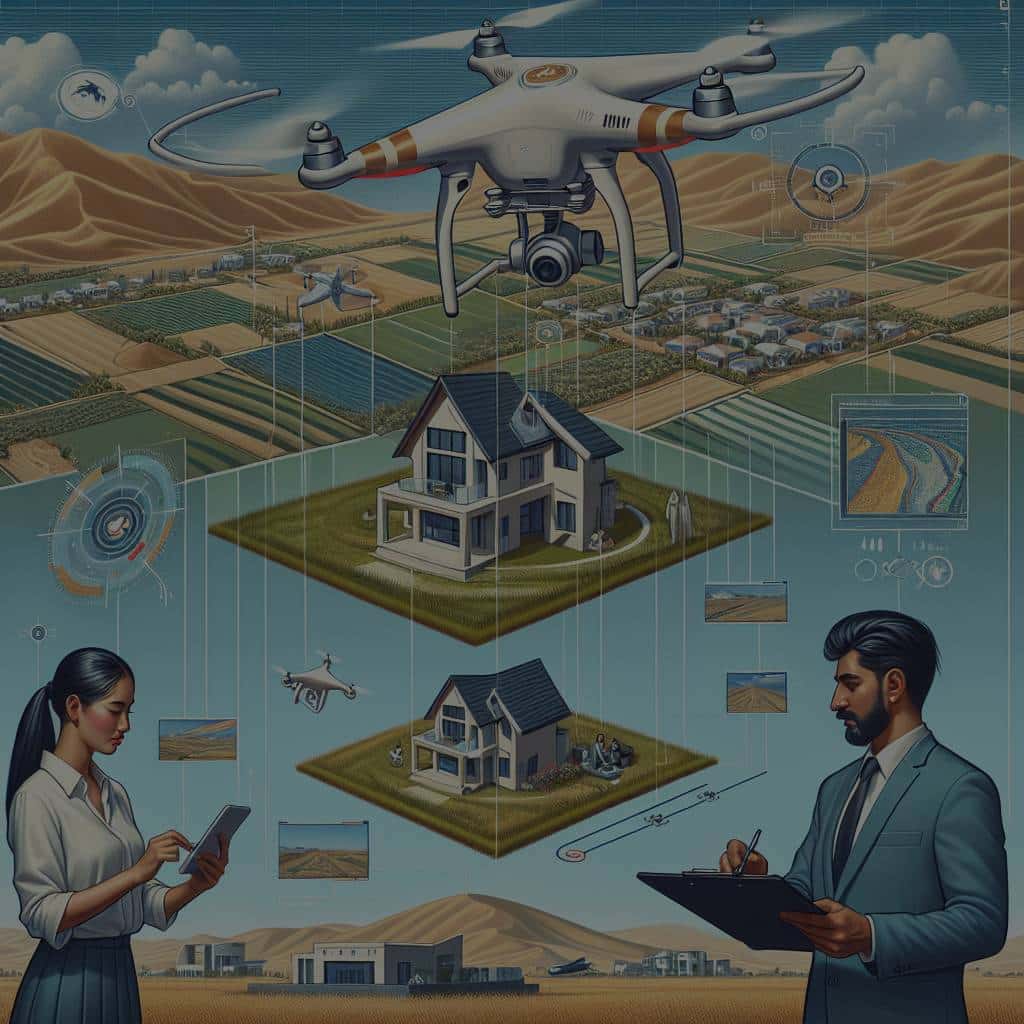In the evolving world of real estate, technology is rapidly changing the game. One such innovation that has proved to be a game-changer is drone technology. Drones, also known as Unmanned Aerial Vehicles (UAVs), are being extensively used for real estate land surveys and inspections. They offer an efficient, cost-effective, and time-saving way of gathering data and mapping properties. Whether you are surveying a large estate or inspecting a construction site, drones can provide invaluable insights and images that aid decision-making. Let’s explore how this technology can be leveraged for conducting land surveys and inspections.
Aerial Surveys with Drones
Surveying land has traditionally been a labor-intensive and time-consuming process. However, with the advent of drone technology, the paradigm has shifted. Drones can quickly cover large areas of land, capturing high-resolution images and producing accurate maps in less time than traditional methods.
In parallel : How to Navigate Real Estate Investment in Coastal Areas Prone to Hurricanes?
A drone equipped with a high-resolution camera and GPS can effectively survey a plot of land, capturing images from various angles. The data collected is then processed using specialized software to generate detailed topographic maps. The aerial perspective offered by drones allows for the identification of features that may not be visible from ground level. This includes aspects such as the gradient of the land, any natural or artificial obstructions, and the presence of water bodies.
Drones for Construction Inspections
Drones are revolutionizing the construction industry by enhancing on-site inspections. In the past, inspections would require manual labor, climbing scaffolding, and potentially putting human lives at risk. Today, drones can carry out these tasks with relative ease and at a fraction of the time.
Additional reading : How to Develop Real Estate That Facilitates Community Farming and Local Food Production?
In a construction inspection, a drone can be used to capture real-time images and video footage of the site. This provides a clear, aerial view of the entire property and allows inspectors to identify any potential issues or hazards. These drones come equipped with cameras that can capture images in high resolution, providing a clear, detailed view of the construction site.
Real Estate Imaging and Mapping
Real estate professionals can greatly benefit from the use of drones for imaging and mapping properties. High-quality aerial images captured by drones can showcase a property from various angles, providing an impressive perspective for potential buyers.
By using drone technology, estate agents can create virtual tours of properties, allowing prospective buyers to explore properties remotely. In addition to images, drones can also create 3D models of properties which can be viewed from multiple angles, allowing potential buyers to get a realistic idea of the property layout.
Software for Drone Data Processing
Once a drone has completed a survey or inspection, the data it has collected needs to be processed. There is a wide variety of software solutions designed for this purpose, each offering different features and capabilities.
The software processes the images captured by the drone, stitching them together to create seamless maps or 3D models. It can also analyze the data and generate reports highlighting key information such as the dimensions of a property, the slope of the land, or potential hazards on a construction site. This information can be invaluable in decision-making, whether it’s for property valuation, construction planning, or safety assessments.
Legal Considerations for Drone Use
While drone technology offers immense benefits, it’s important to note that there are legal considerations that need to be taken into account when using drones for land surveys or inspections. Understanding these regulations is crucial to ensure that your drone operations are compliant with the law.
In many jurisdictions, commercial use of drones requires a license or permit. This often involves demonstrating a level of competency in flying a drone and understanding the local aviation laws. Drones must also comply with certain restrictions such as flying within the operator’s line of sight, not flying above a certain height, and avoiding no-fly zones such as airports or densely populated areas.
Advantages of Drone Technology in Real Estate
Undoubtedly, drone technology has brought about numerous advantages in the realm of real estate. This technology offers an effective solution for data collection and property mapping, rendering traditional survey methods obsolete. Drone mapping not only saves time and effort but also decreases the risk of human error.
With high-resolution cameras, drones capture detailed and precise images, which are then processed by mapping software to generate comprehensive orthomosaic maps. These maps provide a holistic view of the area under survey, giving realtors, developers, and potential buyers a comprehensive understanding of the property layout.
Moreover, drone inspections can help identify potential problems that might otherwise go unnoticed. For instance, a drone inspection can reveal structural issues, roof damage, or other potential hazards. Thanks to the drone’s ability to reach high or hard-to-reach places, inspectors can conduct thorough checks without having to climb ladders or risk their safety.
Drone technology is not only helpful for inspections and surveys but is also revolutionizing real estate marketing. With captivating drone photography, realtors can showcase properties in an impressive and engaging way. This approach not only attracts potential buyers but also helps real estate professionals stand out in the competitive market.
The Future of Drone Surveys in Real Estate
Looking ahead, it’s clear that drone technology will continue to be an integral part of real estate land surveys and inspections. The use of drones in real estate has seen a tremendous surge in recent years, and this trend is only expected to grow. As technology advances, drones are becoming more sophisticated, allowing for even more precise and detailed data collection.
With the emergence of more powerful mapping software, processing of drone surveys will become even more precise and efficient. Advanced software will be able to generate point cloud data, digital surface models, and 3D visualizations with a single drone flight.
Additionally, the role of drone pilots in real estate is becoming more critical. As drone regulations evolve, there will be a growing need for qualified pilots who can navigate the legal landscape and operate drones safely and effectively.
In conclusion, drone technology is reinventing real estate land surveys and inspections, providing a more efficient, safer, and comprehensive way of collecting and analyzing data. As technology continues to evolve, drone surveys will become even more indispensable in the future, making high resolution drone mapping a standard practice in the real estate industry.






